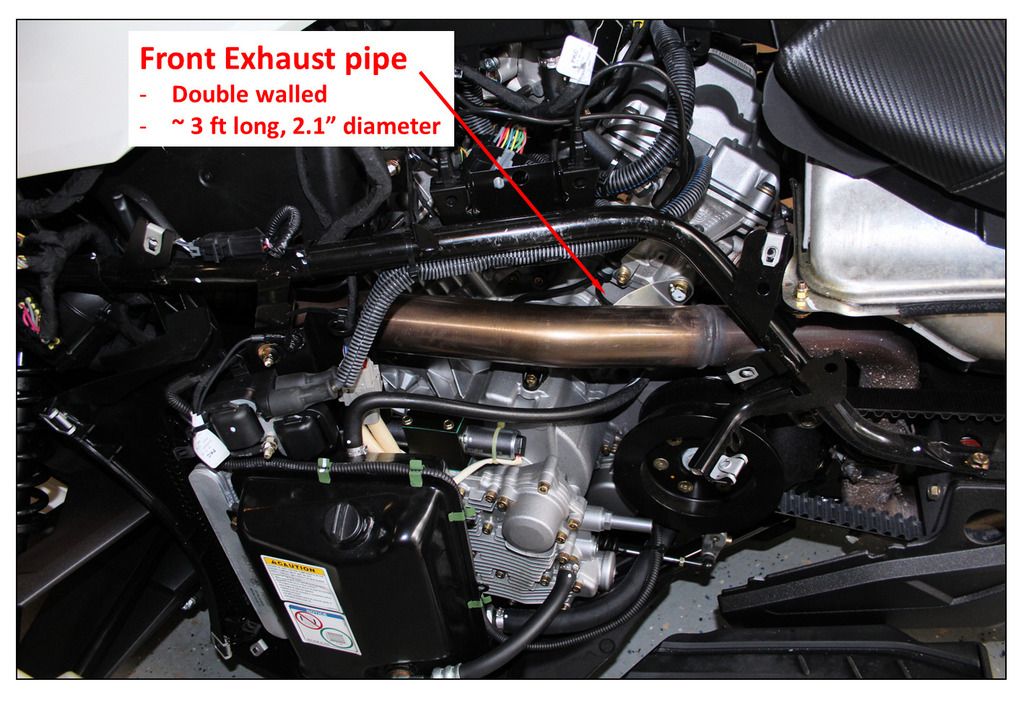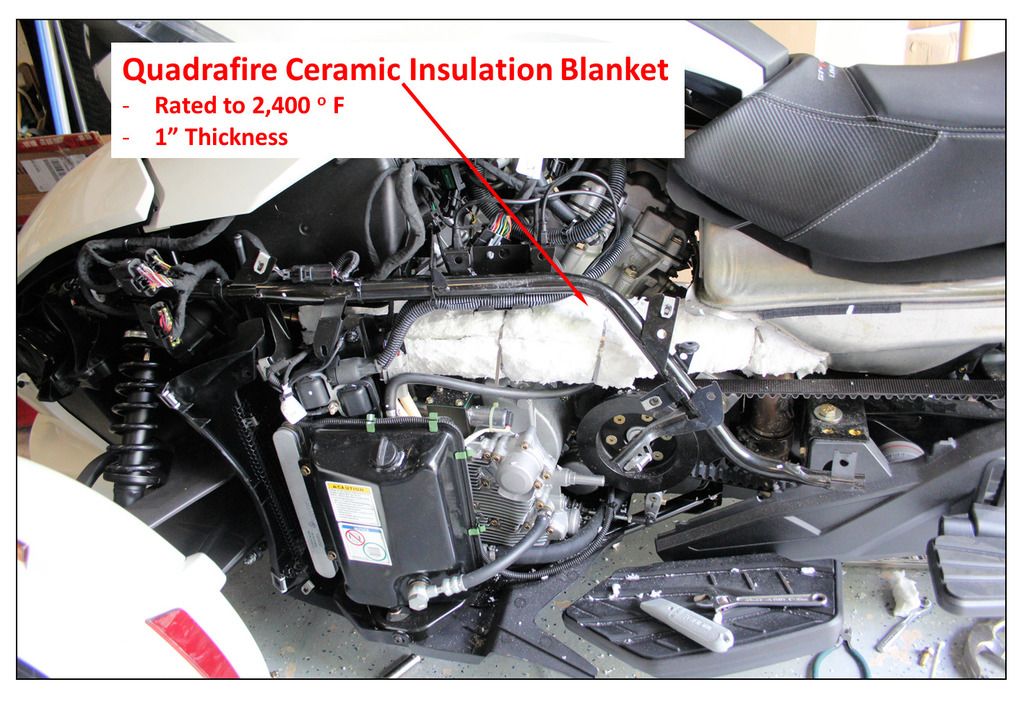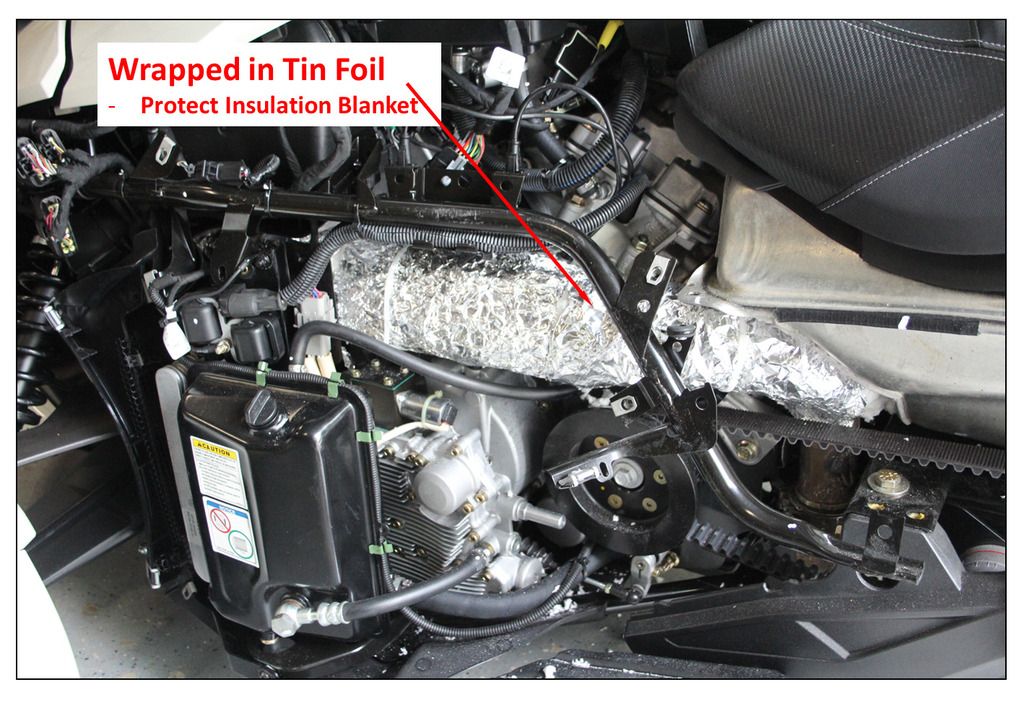spacetiger
New member
Having used this successfully on the 2012 RTS, I am applying it to my (new to me) 2013 ST Limited.
I think the root cause of the heat are the exhaust pipes. Even though they are double walled and have at least ~1" minimum clearance (to most parts), I think the air flow in the body wicks off the high heat and moves it onto all the other components within the body. You can see how the exhaust pipe gets hot by having all that very hot air (being exposed to the exhaust pipes) being blown onto the gas tank. The master cylinder suffers the same fate as it is just behind the rear exhaust pipe. If you can contain the heat, it doesn't heat up everything inside the body as much.

My approach to mitigating the heat issue is to contain the heat in the exhaust pipes - but, not by wrapping the exhaust pipes or ceramic coating the inside of the pipes. Instead, I used an inexpensive ceramic insulation blanket that is rated to 2,400 degrees F that you can get on ebay for about $40. You will need some stainless steel exhaust wrap ties too. I wrapped both exhaust pipes that are inside the body work. It not only helped the RTS, but it helped improve the MPG as well.
I know there as been many threads on this topic. Many cite insufficient air flow leading to extra holes (at the bottom) or additional air scoops. Others have gone the exhaust wrap or ceramic coating on the inside of the exhaust pipes. BTW, we have double walled exhaust pipes. But, I think they only help so much. Or some people do some combination of both approaches. But I found the 1" thick insulation blanket really holds the heat in better. By keeping the heat in, the exhaust velocity stays up giving you more efficiency = better mpg. exhaust wrap or ceramic coating requires you to remove the exhaust pipes - a PITA. The insulation blanket lays over the exhaust pipe; the whole job can be done in about 3 hours.


The ST has some cleaner air flow in the bodywork, but the exhaust pipes are close to a lot of sensitive components. The insulation blanket restricts air flow even more than the stock layout so I will be keeping an eye out on how the insulation blanket holds up. On the RTS I didn't wrap the insulation blanket with tin foil and it got a little dirty over time. The tin foil should help, if anything you cannot see the insulation wrap.
I am about to take a 780 mile trip (tomorrow) and will report back on the results.
I think the root cause of the heat are the exhaust pipes. Even though they are double walled and have at least ~1" minimum clearance (to most parts), I think the air flow in the body wicks off the high heat and moves it onto all the other components within the body. You can see how the exhaust pipe gets hot by having all that very hot air (being exposed to the exhaust pipes) being blown onto the gas tank. The master cylinder suffers the same fate as it is just behind the rear exhaust pipe. If you can contain the heat, it doesn't heat up everything inside the body as much.

My approach to mitigating the heat issue is to contain the heat in the exhaust pipes - but, not by wrapping the exhaust pipes or ceramic coating the inside of the pipes. Instead, I used an inexpensive ceramic insulation blanket that is rated to 2,400 degrees F that you can get on ebay for about $40. You will need some stainless steel exhaust wrap ties too. I wrapped both exhaust pipes that are inside the body work. It not only helped the RTS, but it helped improve the MPG as well.
I know there as been many threads on this topic. Many cite insufficient air flow leading to extra holes (at the bottom) or additional air scoops. Others have gone the exhaust wrap or ceramic coating on the inside of the exhaust pipes. BTW, we have double walled exhaust pipes. But, I think they only help so much. Or some people do some combination of both approaches. But I found the 1" thick insulation blanket really holds the heat in better. By keeping the heat in, the exhaust velocity stays up giving you more efficiency = better mpg. exhaust wrap or ceramic coating requires you to remove the exhaust pipes - a PITA. The insulation blanket lays over the exhaust pipe; the whole job can be done in about 3 hours.


The ST has some cleaner air flow in the bodywork, but the exhaust pipes are close to a lot of sensitive components. The insulation blanket restricts air flow even more than the stock layout so I will be keeping an eye out on how the insulation blanket holds up. On the RTS I didn't wrap the insulation blanket with tin foil and it got a little dirty over time. The tin foil should help, if anything you cannot see the insulation wrap.
I am about to take a 780 mile trip (tomorrow) and will report back on the results.

